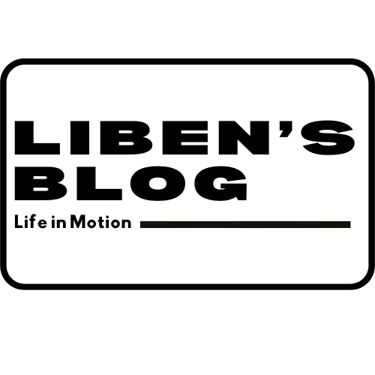A GUIDE TO NATURAL PIG FARMING
Unlock the secrets of natural pig farming! This guide dives into providing pigs with a stress-free life, focusing on ample space, outdoor access, & natural feed. Discover how natural pig farming promotes animal welfare, creates healthier pork, and fosters a sustainable agricultural practice. Learn ethical pig raising today!
ORGANIC AGRO-LIVESTOCK FARMING
Dr. Emmanuel L Yanthan
4/6/20245 min read


A GUIDE TO NATURAL PIG FARMING
Natural pig farming is a holistic approach to raising pigs that emphasizes welfare, environmental sustainability, and ethical practices. This method strives to create a more harmonious relationship between farmers, animals, and the environment by mimicking the natural behaviours and diet of pigs. In this guide, we'll explore various aspects of natural pig farming, including suitable breeds, forages, disease management, nutrition, housing, and farming methods from around the world and specifically East Asia.
Suitable Pig Breeds for Natural Farming
The choice of breed plays a crucial role in the success of natural pig farming. Hardy breeds that can thrive in outdoor conditions and forage on natural diets are preferred. Some of the most suitable breeds include the Tamworth, Gloucestershire Old Spot, and the Berkshire. These breeds are known for their robust health, good mothering abilities, and adaptability to varying climatic conditions.
Natural Forages for Pigs
In a natural pig farming setup, pigs are encouraged to forage, which allows them to exhibit their natural behaviors and consume a diet that is varied and nutritious. Forages commonly used in natural pig farming include grasses, legumes, roots, and tubers. Pigs also benefit from having access to fruit and vegetable scraps, which helps in reducing food waste.
Diseases Common in Natural Pig Farms
While natural pig farming tends to promote better health and resilience among pigs, certain diseases can still pose a challenge. Some common issues include parasitic infections, respiratory diseases, and foot problems. Implementing good biosecurity measures, regular health checks, and natural remedies can help in managing and preventing these diseases.
Pig Feeds and Nutrition
A balanced diet is crucial for the health and growth of pigs. In natural farming, the diet is primarily composed of forages, supplemented with grains, protein sources (like soybean meal), and minerals. Fermented feeds can also be a valuable addition to the diet, improving gut health and nutrient absorption.
Natural Farming Pig Housing
Housing in natural pig farming is designed to provide comfort, safety, and the opportunity for pigs to express their natural behaviors. Deep straw bedding, spacious outdoor paddocks, and shelters that protect from extreme weather conditions are all hallmarks of natural farming pig housing. This environment not only enhances the pigs' well-being but also contributes to the overall sustainability of the farm.
Natural Farming Methods from Around the World and East Asia
Natural pig farming is practiced in various forms around the world, with each region adapting the approach to fit its unique climate, culture, and resources. In East Asia, the integration of pig farming with crop production and aquaculture is a common practice. This integrated approach, often referred to as "pig-fish" or "pig-duck" farming, maximizes resource efficiency and environmental sustainability.
In conclusion, natural pig farming represents a viable and ethical alternative to conventional pig production methods. By focusing on the well-being of the pigs, the health of the environment, and the quality of the produce, farmers can create a more sustainable and humane farming system. While it may require more knowledge, patience, and commitment, the benefits of natural pig farming are undeniable, offering a win-win solution for farmers, animals, and consumers alike.
PIGGERY WASTE MANAGEMENT
No smell piggery methods have been developed and adopted worldwide to address environmental concerns and improve animal welfare. These innovative approaches focus on reducing the odor and pollution typically associated with pig farming. Here are some notable methods from around the globe:
1. Korean Natural Farming (KNF)
Originating in South Korea, KNF involves using indigenous microorganisms (IMO) to ferment livestock waste, thereby eliminating foul odors. This method enhances soil health and reduces the need for chemical inputs by creating a closed-loop system that recycles waste into valuable compost and liquid fertilizers.
2. Bokashi Fermentation
A Japanese technique that has gained international recognition, Bokashi uses a mix of microorganisms to ferment organic waste, including pig manure, under anaerobic conditions. This process rapidly breaks down waste without emitting foul odors and produces a nutrient-rich soil amendment.
3. Deep Litter Systems
Widely used in various countries, deep litter systems involve layering organic bedding material (e.g., straw, sawdust) on the floor of pig pens. Over time, the material absorbs waste and fosters microbial activity, composting in place and significantly reducing odor emissions. This method also improves animal welfare by providing a comfortable living environment.
4. Biofiltration
In some European countries, biofiltration techniques are employed to treat air from pig barns. This process involves passing barn air through a biological filter, typically made of organic materials like wood chips, where microorganisms break down odorous compounds, significantly reducing smell.
5. Phytoremediation
This innovative approach uses plants to absorb and break down pollutants from soil and water, including those in and around pig farms. Certain plant species are effective in absorbing nutrients and contaminants from effluent, thereby reducing odors and improving water quality.
6. Anaerobic Digestion
Used in various countries, including Germany and Denmark, anaerobic digestion processes pig manure in airtight containers. This method not only reduces odors but also produces biogas (a renewable energy source) and digestate, a nutrient-rich fertilizer, thus turning waste into resources.
7. Covered Lagoon Systems
In the United States, some farms use covered lagoon systems to manage manure. These lagoons are designed to anaerobically break down waste, with covers that capture gases (including methane, which can be used as energy) and reduce odor emissions.
These methods reflect the agricultural sector's growing commitment to environmental sustainability and animal welfare. By adopting these no-smell piggery techniques, farmers worldwide are able to mitigate the negative impacts of pig farming on their surroundings and communities.
Recommended Books:
"The Complete Guide to Raising Pigs: Everything You Need to Know Explained Simply" by Carlotta Cooper - Cooper’s book is an excellent resource for anyone looking to dive into pig farming. It covers a range of topics from choosing the right breed to feeding practices, with an emphasis on natural and ethical farming methods.
"Pig Tales: An Omnivore's Quest for Sustainable Meat" by Barry Estabrook - While not a traditional guide, "Pig Tales" delves into the pig farming industry, highlighting the benefits of sustainable and natural farming practices. Estabrook's investigative work offers valuable insights into the impacts of conventional farming and the potential of alternative approaches.
"Small-Scale Pig Raising" by Dirk van Loon - This book covers all aspects of raising pigs on a small scale, including detailed discussions on feed, health care, and breeding. Van Loon advocates for humane and natural rearing methods, making this a great resource for ethical farming.
"Pastured Pigs on a Small Scale" by Lee McCosker - McCosker's guide focuses on pastured pig farming, a key aspect of natural pig farming. It offers practical advice on how to manage pigs in a pasture-based system, ensuring they live in a natural environment and are fed a diet close to their natural preferences.
Korean Natural Farming by Isabella
IFFCO Bokshi Bran Powder
Bokashi Bran Panchagavya Organic Liquid, Jeevamrutham for Organic Plant Growth Promoter
Trust Basket Bokashi Bran Kit
